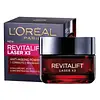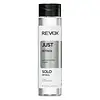What's inside
What's inside
 Key Ingredients
Key Ingredients

 Benefits
Benefits

 Concerns
Concerns

 Ingredients Side-by-side
Ingredients Side-by-side

Water
Skin ConditioningGlycerin
HumectantIsohexadecane
EmollientHydroxypropyl Tetrahydropyrantriol
Skin ConditioningDimethicone
EmollientIsopropyl Isostearate
EmollientAluminum Starch Octenylsuccinate
AbsorbentPropylene Glycol
HumectantNylon-12
Octyldodecanol
EmollientCetyl Alcohol
EmollientBehenyl Alcohol
EmollientAmmonium Polyacryloyldimethyl Taurate
Emulsion StabilisingC13-14 Isoparaffin
EmollientPEG-100 Stearate
Stearic Acid
CleansingStearyl Alcohol
EmollientTriethanolamine
BufferingCetearyl Alcohol
EmollientCetearyl Glucoside
EmulsifyingMyristic Acid
CleansingMyristyl Alcohol
EmollientPalmitic Acid
EmollientAdenosine
Skin ConditioningDisodium EDTA
Disodium Stearoyl Glutamate
CleansingHydrolyzed Hyaluronic Acid
HumectantCapryloyl Salicylic Acid
ExfoliatingLaureth-7
EmulsifyingT-Butyl Alcohol
PerfumingPolyacrylamide
Polyethylene
AbrasiveMethylparaben
PreservativePhenoxyethanol
PreservativeCI 15985
Cosmetic ColorantCI 19140
Cosmetic ColorantLinalool
PerfumingIsoeugenol
PerfumingLimonene
PerfumingCitronellol
PerfumingBenzyl Alcohol
PerfumingParfum
MaskingWater, Glycerin, Isohexadecane, Hydroxypropyl Tetrahydropyrantriol, Dimethicone, Isopropyl Isostearate, Aluminum Starch Octenylsuccinate, Propylene Glycol, Nylon-12, Octyldodecanol, Cetyl Alcohol, Behenyl Alcohol, Ammonium Polyacryloyldimethyl Taurate, C13-14 Isoparaffin, PEG-100 Stearate, Stearic Acid, Stearyl Alcohol, Triethanolamine, Cetearyl Alcohol, Cetearyl Glucoside, Myristic Acid, Myristyl Alcohol, Palmitic Acid, Adenosine, Disodium EDTA, Disodium Stearoyl Glutamate, Hydrolyzed Hyaluronic Acid, Capryloyl Salicylic Acid, Laureth-7, T-Butyl Alcohol, Polyacrylamide, Polyethylene, Methylparaben, Phenoxyethanol, CI 15985, CI 19140, Linalool, Isoeugenol, Limonene, Citronellol, Benzyl Alcohol, Parfum
Water
Skin ConditioningPropylene Glycol
HumectantPEG-40 Hydrogenated Castor Oil
EmulsifyingPolysorbate 20
EmulsifyingJasminum Sambac Flower Extract
MaskingGlycerin
HumectantSodium Hyaluronate
HumectantPanthenol
Skin ConditioningPPG-1-PEG-9 Lauryl Glycol Ether
EmulsifyingPhenoxyethanol
PreservativeRetinyl Palmitate
Skin ConditioningDisodium EDTA
Rosmarinus Officinalis Leaf Oil
MaskingCitric Acid
BufferingSodium Benzoate
MaskingPotassium Sorbate
PreservativeWater, Propylene Glycol, PEG-40 Hydrogenated Castor Oil, Polysorbate 20, Jasminum Sambac Flower Extract, Glycerin, Sodium Hyaluronate, Panthenol, PPG-1-PEG-9 Lauryl Glycol Ether, Phenoxyethanol, Retinyl Palmitate, Disodium EDTA, Rosmarinus Officinalis Leaf Oil, Citric Acid, Sodium Benzoate, Potassium Sorbate
 Reviews
Reviews

Ingredients Explained
These ingredients are found in both products.
Ingredients higher up in an ingredient list are typically present in a larger amount.
Disodium EDTA plays a role in making products more stable by aiding other preservatives.
It is a chelating agent, meaning it neutralizes metal ions that may be found in a product.
Disodium EDTA is a salt of edetic acid and is found to be safe in cosmetic ingredients.
Learn more about Disodium EDTAGlycerin is already naturally found in your skin. It helps moisturize and protect your skin.
A study from 2016 found glycerin to be more effective as a humectant than AHAs and hyaluronic acid.
As a humectant, it helps the skin stay hydrated by pulling moisture to your skin. The low molecular weight of glycerin allows it to pull moisture into the deeper layers of your skin.
Hydrated skin improves your skin barrier; Your skin barrier helps protect against irritants and bacteria.
Glycerin has also been found to have antimicrobial and antiviral properties. Due to these properties, glycerin is often used in wound and burn treatments.
In cosmetics, glycerin is usually derived from plants such as soybean or palm. However, it can also be sourced from animals, such as tallow or animal fat.
This ingredient is organic, colorless, odorless, and non-toxic.
Glycerin is the name for this ingredient in American English. British English uses Glycerol/Glycerine.
Learn more about GlycerinPhenoxyethanol is a preservative that has germicide, antimicrobial, and aromatic properties. Studies show that phenoxyethanol can prevent microbial growth. By itself, it has a scent that is similar to that of a rose.
It's often used in formulations along with Caprylyl Glycol to preserve the shelf life of products.
Propylene Glycol is an odorless, colorless liquid. As a humectant, it helps skin retain moisture. It also aids in delivering active ingredients.
Another role of this ingredient is preventing a product from melting or freezing. Propylene glycol also adds antimicrobrial properties to a product, elongating product lifespan.
This ingredient is considered an organic alcohol and commonly added into both cosmetics and foods.
Those with sensitive skin or conditions may develop a rash when using this ingredient.
Learn more about Propylene GlycolWater. It's the most common cosmetic ingredient of all. You'll usually see it at the top of ingredient lists, meaning that it makes up the largest part of the product.
So why is it so popular? Water most often acts as a solvent - this means that it helps dissolve other ingredients into the formulation.
You'll also recognize water as that liquid we all need to stay alive. If you see this, drink a glass of water. Stay hydrated!
Learn more about Water